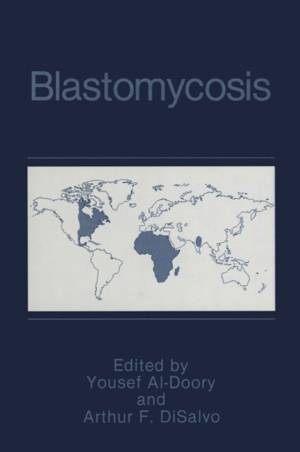
Je cadeautjes zeker op tijd in huis hebben voor de feestdagen? Kom langs in onze winkels en vind het perfecte geschenk!
- Afhalen na 1 uur in een winkel met voorraad
- Gratis thuislevering in België vanaf € 30
- Ruim aanbod met 7 miljoen producten
Je cadeautjes zeker op tijd in huis hebben voor de feestdagen? Kom langs in onze winkels en vind het perfecte geschenk!
- Afhalen na 1 uur in een winkel met voorraad
- Gratis thuislevering in België vanaf € 30
- Ruim aanbod met 7 miljoen producten
Zoeken
Omschrijving
Blastomycosis remains the most enigmatic of human mycotic infections. The enigmas encompass the natural habitat of the etiologic agent, extent of exposure and subclinical infections in endemic areas, distribution of en- demic foci throughout the world, inconsistency of serologic evaluation of infected patients, and varying response of such patients to standard treat- ment regimens. In spite of diligent investigations by many competent investigators, we still do not know the ecological niche inhabited by the etiologic agent. We have many tantalizing clues but no definite answers. Nor do we know the extent of the endemic areas in the world for this disease. Skin testing, so useful in defining the distribution of histoplasmosis and coccidioidomycosis, has been of no value in mapping endemic areas for blastomycosis. Even the serologic evaluation of known cases of the disease has been too erratic in results to be useful as a diagnostic or prognostic procedure. The enigmas of blastomycosis go straight to the disease itself. There is an extensive literature on the debate concerning the presence and extent of subclinical infections. Case report series demonstrate that such transient infections do occur but, unlike other mycoses, the extent to which this phe- nomenon is common in the general population still cannot be assessed. Even the diagnosis of established disease is a major clinical problem.
Specificaties
Betrokkenen
- Uitgeverij:
Inhoud
- Aantal bladzijden:
- 268
- Taal:
- Engels
- Reeks:
Eigenschappen
- Productcode (EAN):
- 9781461364559
- Verschijningsdatum:
- 18/10/2012
- Uitvoering:
- Paperback
- Formaat:
- Trade paperback (VS)
- Afmetingen:
- 152 mm x 229 mm
- Gewicht:
- 399 g

Alleen bij Standaard Boekhandel
+ 257 punten op je klantenkaart van Standaard Boekhandel
Beoordelingen
We publiceren alleen reviews die voldoen aan de voorwaarden voor reviews. Bekijk onze voorwaarden voor reviews.








